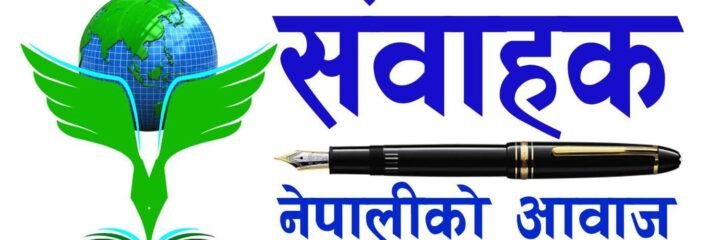
He was born in the outer district of Kath, the capital of the Afrighid dynasty of Khwarezm (now a part of Uzbekistan, Kazakhstan, and Turkmenistan)[14][10] (or Chorasmia).[15][14] To conduct research, Al-Biruni used different methods to tackle the various fields he studied. Many consider Al-Biruni one of the greatest scientists in history, and especially of Islam because of his discoveries and methodology. He lived during the Islamic Golden Age, which promoted astronomy and encouraged all scholars to work on their research.[14] Al-Biruni spent the first twenty-five years of his life in Khwarezm where he studied Islamic jurisprudence, theology, grammar, mathematics, astronomy, medicine, philosophy and also dabbled in the field of physics and most other sciences as well.[15]The Iranian Khwarezmian language, which was the language of Biruni,[16][17] survived for several centuries after Islam until the Turkification of the region, and so must some at least of the culture and lore of ancient Khwarezm, for it is hard to see the commanding figure of Biruni, a repository of so much knowledge, appearing in a cultural vacuum.[18] He was sympathetic to the Afrighids, who were overthrown by the rival dynasty of Ma’munids in 995. He left his homeland for Bukhara, then under the Samanid ruler Mansur II the son of Nuh. There he corresponded with Avicenna[19] and there are extant exchanges of views between these two scholars.
In 998, he went to the court of the Ziyarid amir of Tabaristan, Shams al-Mo’ali Abol-hasan Ghaboos ibn Wushmgir. There he wrote his first important work, al-Athar al-Baqqiya ‘an al-Qorun al-Khaliyya (literally: “The remaining traces of past centuries” and translated as “Chronology of ancient nations” or “Vestiges of the Past”) on historical and scientific chronology, probably around 1000 A.D., though he later made some amendments to the book. He also visited the court of the Bavandid ruler Al-Marzuban. Accepting the definite demise of the Afrighids at the hands of the Ma’munids, he made peace with the latter who then ruled Khwarezm. Their court at Gorganj (also in Khwarezm) was gaining fame for its gathering of brilliant scientists.
In 1017, Mahmud of Ghazni took Rey. Most scholars, including al-Biruni, were taken to Ghazni, the capital of the Ghaznavid dynasty.[2] Biruni was made court astrologer[20] and accompanied Mahmud on his invasions into India, living there for a few years. He was forty-four years old when he went on the journeys with Mahmud of Ghazni.[14] Biruni became acquainted with all things related to India. He may even have learned some Sanskrit. During this time he wrote his study of India, finishing it around 1030.[21] Along with his writing, Al-Biruni also made sure to extend his study to science while on the expeditions. He sought to find a method to measure the height of the sun, and created an early version of an astrolabe for that purpose.[14] Al-Biruni was able to make much progress in his study over the frequent travels that he went on throughout the lands of India.[22]
Mathematics and Astronomy-
Ninety-five of 146 books known to have been written by Bīrūnī were devoted to astronomy, mathematics, and related subjects like mathematical geography.[23] His religion contributed to his research of astronomy, as in Islam, worship and prayer require knowing the precise directions of sacred locations, which can only be accurately found using astronomical data.[14] Biruni’s major work on astrology[24] is primarily an astronomical and mathematical text, only the last chapter concerns astrological prognostication. His endorsement of astrology is limited, in so far as he condemns horary astrology[25] as ‘sorcery’.
In discussing speculation by other Muslim writers on the possible motion of the Earth, Biruni acknowledged that he could neither prove nor disprove it, but commented favourably on the idea that the Earth rotates.[26] He wrote an extensive commentary on Indian astronomy in the Tahqiq ma li-l-hind mostly translation of Aryabhatta’s work, in which he claims to have resolved the matter of Earth’s rotation in a work on astronomy that is no longer extant, his Miftah-ilm-alhai’a (Key to Astronomy):
[T]he rotation of the earth does in no way impair the value of astronomy, as all appearances of an astronomic character can quite as well be explained according to this theory as to the other. There are, however, other reasons which make it impossible. This question is most difficult to solve. The most prominent of both modern and ancient astronomers have deeply studied the question of the moving of the earth, and tried to refute it. We, too, have composed a book on the subject called Miftah-ilm-alhai’a (Key to Astronomy), in which we think we have surpassed our predecessors, if not in the words, at all events in the matter.[27]
In his description of Sijzi’s astrolabe he hints at contemporary debates over the movement of the earth. He carried on a lengthy correspondence and sometimes heated debate with Ibn Sina, in which Biruni repeatedly attacks Aristotle’s celestial physics: he argues by simple experiment that vacuum must exist;[28] he is “amazed” by the weakness of Aristotle’s argument against elliptical orbits on the basis that they would create vacuum;[29] he attacks the immutability of the celestial spheres;[30] and so on.
In his major extant astronomical work, the Mas’ud Canon, Biruni utilizes his observational data to disprove Ptolemy’s immobile solar apogee.[31][32] Not only did he perform research on theories, but he also wrote an in-depth analysis and explanation of an astrolabe and how it should work. He drew many different depictions of various instruments that are considered to be the precursors of more modern objects such as clocks and the astrolabe, in which other scientists were able to use to complete these inventions in the coming years.[14] More recently, Biruni’s eclipse data was used by Dunthorne in 1749 to help determine the acceleration of the moon,[33] and his observational data has entered the larger astronomical historical record and is still used today[34] in geophysics and astronomy.
https://en.wikipedia.org/wiki/Al-Biruni













































